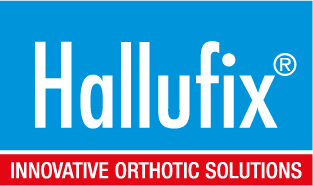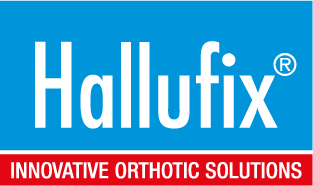Maintain foot health and stay mobile
When talking about health, most people think of topics such as the immune system, nutrition and exercise. While these are of course important aspects of life, foot health is rarely mentioned. It is usually only mentioned when common ailments such as hallux valgus cause acute discomfort. Yet it is central to an active and self-determined life and requires just as much care as all other areas. But don't worry: good foot health can easily be integrated into everyday life.
What is foot health?
Many people use the term "health" to describe a concept of what health or being healthy means to them. In fact, the term is "not a clearly defined construct" (according to the Federal Center for Health Education), but rather a combination of different things. In general, however, health can be described as general well-being without physical or mental disorders. If this is applied specifically to foot health, the following criteria must be met in order to be able to speak of healthy feet:
- The feet are free of pain, both at rest and when standing, walking, and so on.
- The skin of the feet and the nails show no signs of disease.
- The musculoskeletal system is strong, resilient and free of problems.
Healthy feet allow us to move through life and carry ourselves to different places. Impaired foot health, on the other hand, can make this mobility more difficult.
What are typical complaints and diseases of the foot?
Incorrect strain or overloading can quickly cause pain in the foot. For example, after twisting an ankle or a long hike, the joints or muscles in the foot are overstretched and need some time to recover. Shoes that are too tight can also cause short-term irritation and blisters. However, there are some complaints and symptoms that can put a permanent strain on foot health.
Hallux valgus
Hallux valgus, also known colloquially as bunion, describes a misalignment of the big toe and the outward protrusion of the ball of the foot. People
often remain symptom-free, but more severe cases can lead to increased irritation and even severe foot pain.
Women are primarily affected, but hallux valgus also occurs in men.
Heel spur
A thorn-like, bony outgrowth on the heel bone that can develop over time due to incorrect
loading of the feet.
Osteoarthritis
Regular, monotonous and repetitive strain on the joints can wear out the joints in the foot. The resulting pain can lead to postures
which in turn can trigger other complaints.
Nail fungus and athlete's foot
Fungal infections can occur both on the toes and on the skin of the foot - and this is not necessarily due to a lack of hygiene; footwear that does not breathe enough can also encourage the development of fungi.
Hammer toe and claw toes
Deformities of the toes, where one or more toes remain in a bent position, often painful and aggravated by pressure in shoes.
Corns and calluses
Thickening of the skin caused by friction and pressure. Corns are often smaller and deeper, while calluses are larger and shallower.
What should I pay attention to for good foot health?
In addition to general health tips, there are two specific aspects of foot health that you should be aware of
.
Make sure you wear good shoes
Many people spend most of the day in shoes - and these have a permanent effect on the foot. If the shoe is too tight, not only can blisters occur when walking, but the position and shape of the foot can also be damaged in the long term. So when you buy shoes, you should not only make sure that the length (a few millimetres longer than the big toe) is correct, but also the width and shape of the heel. The shoes should not rub or be noticeably large in any other way - shoes that are too large can also be problematic! Good support of the natural shape of the foot is important, the shoe should not slip.
Ideally, you should test the shoes extensively in everyday life: if pressure marks or reddened skin appear after a short time, the shoes are unsuitable.
But it's not just the fit that has to be right: The material should also be chosen carefully. Inferior material not only causes the shoe to break down more quickly, but can also directly damage the health of your feet. If the material is not breathable enough, your feet will tend to sweat more and the moist environment will encourage the formation of microorganisms and fungi on your feet. Poor cushioning can lead to incorrect loading of the joints, especially for athletes, which increases the risk of injury.

Keep moving
As with the rest of the body, it is important that the feet are regularly loaded and moved. This is the only way to ensure that the muscles remain active and can withstand everyday exertion. A healthy foot should be able to roll smoothly and easily so that a pain-free gait is possible.
Exercises for foot health
Exercise is important for foot health - and can be easily integrated into everyday life. You can do the following exercises during the day and do a lot for your foot health.
Walk barefoot
Especially in your own four walls, you can leave your slippers behind and walk naturally barefoot (socks are of course fine). This allows your feet to perform all of their natural movements, effectively preventing misalignments and strengthening your foot muscles. Designated barefoot paths or clean beaches are also a fantastic way to let your feet breathe!
Stretch toes
Stand barefoot in front of a wall with your toes up and press them against the wall for a few seconds. This stretches the tendons in your foot.
Walking on edges
Stand on a flat surface and carefully roll your feet alternately on the outside and inside of your feet. The joints remain supple, the outer ligaments are stretched and elongated, making twisting your ankle less
likely.
Walking on tiptoe
Roll your foot out onto your toes and use the strength in your foot to lift your heel. Repeat this movement a few times - this not only strengthens your feet,
but also your legs.
Other aids for foot health
Exercise and good footwear are central to foot health, but you can do even more for a healthy appearance: regular foot care (foot baths, creams) and foot massages are not only good for the soul, they are also fantastic ways of keeping the skin on your feet clean and pure. Orthopaedic shoes are a fantastic support to promote correct foot posture or to remedy existing problems.
At Hallufix, for example, you will find our hallux valgus sandals, which can reduce discomfort, especially in summer. For everyday wear, the use of a splint for hallux valgus is ideal for providing immediate relief from pressure pain in the bunion. Taping or a taping loop have a similar effect and can provide useful relief for the muscles and tendons.

